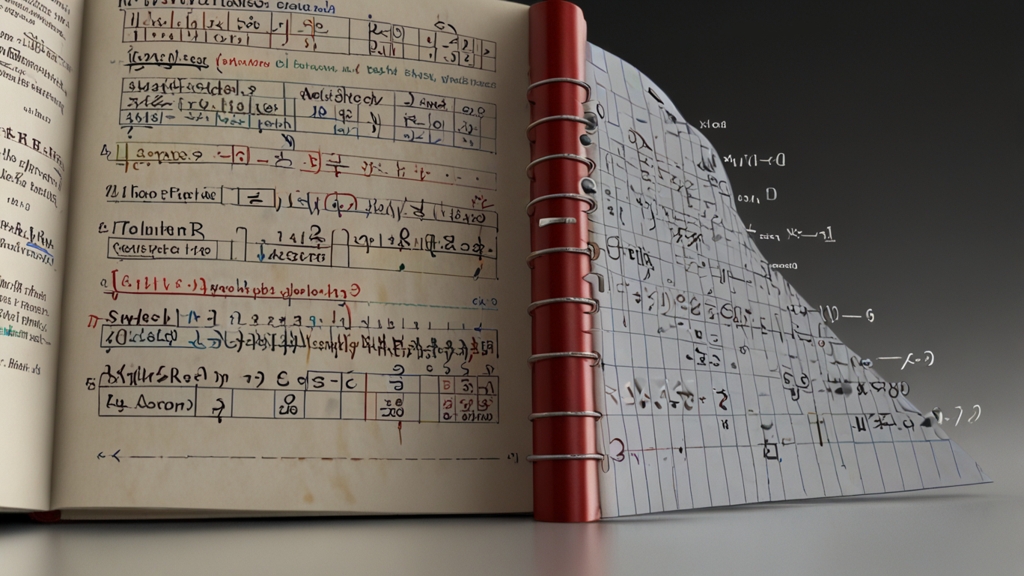Algebra Made Simple: The Easy Way to Understand Complex Concepts
Algebra can often seem like an insurmountable challenge, filled with complex equations, abstract concepts, and bewildering symbols. However, with the right approach and understanding, anyone can demystify algebra and grasp its fundamental principles. This article aims to break down algebra into manageable parts, offering you a clear path to mastering this vital mathematical field.
Understanding the Basics
Before diving into more complicated algebraic concepts, it’s essential to have a firm grasp of the basics. These foundational elements include:
- Variables: Symbols (usually letters) that represent unknown values.
- Constants: Numbers that have a fixed value.
- Expressions: Combinations of variables, constants, and operators (such as +, -, *, /).
- Equations: Statements that two expressions are equal, using the equal sign (=).
The Power of Simplification
One of the keys to mastering algebra is learning to simplify complex equations. Simplification involves reducing expressions into their simplest form. This can be achieved by combining like terms, using the distributive property, and canceling out common factors. Consider the following example:
Example: Simplify the expression 3x + 5x - 2 + 6:
Combine like terms: (3x + 5x) - 2 + 6 = 8x + 4
Solving Linear Equations
Linear equations are the most basic type of algebraic equations and serve as a great starting point. A linear equation looks like this: ax + b = c. Solving these equations often involves isolating the variable (x) on one side of the equation. Here's a step-by-step approach:
Example: Solve the equation 2x + 3 = 7:
Step 1: Subtract 3 from both sides: 2x + 3 - 3 = 7 - 3
Step 2: Simplify: 2x = 4
Step 3: Divide by 2: 2x/2 = 4/2
Solution: x = 2
Quadratic Equations
Quadratic equations take the form of ax^2 + bx + c = 0 and are more complex than linear equations. They typically have two solutions, which can be found using the quadratic formula: x = (-b ± √(b^2 - 4ac)) / 2a. Here's how to use the quadratic formula:
Example: Solve the equation x^2 + 6x + 8 = 0 using the quadratic formula:
Step 1: Identify a, b, and c. Here, a = 1, b = 6, and c = 8.
Step 2: Plug these values into the quadratic formula:
x = (-6 ± √(6^2 - 4*1*8)) / 2*1
x = (-6 ± √(36 - 32)) / 2
x = (-6 ± √4) / 2
Step 3: Simplify under the square root and solve for x:
x = (-6 ± 2) / 2
Solutions: x = (-6 + 2) / 2 = -4/2 = -2, and x = (-6 - 2) / 2 = -8/2 = -4
Graphing Linear Equations
Graphing is a great visual way to understand algebraic concepts. To graph a linear equation, you'll need to put it in the form y = mx + b, where m represents the slope, and b is the y-intercept. Once in this form, it’s straightforward to plot the y-intercept (the point where the line crosses the y-axis) and use the slope to find additional points.
For instance, if you have the equation y = 2x + 1, the y-intercept is 1 (where the line crosses the y-axis). The slope, 2, means that for every unit you move to the right on the x-axis, you move up two units on the y-axis. By plotting these points, you can draw the line representing the equation.
Conclusion
Mastering algebra requires a solid understanding of basic concepts, the ability to simplify expressions, and the skills to solve different types of equations. Whether you're working with linear or quadratic equations, the principles remain the same: isolate the variable, simplify, and solve step-by-step. By breaking down these complexities and practicing regularly, anyone can make algebra simple and intuitive.
Remember, algebra is not just about numbers and equations; it's a way of thinking logically and solving problems. With patience and practice, you will find that algebra becomes less daunting and more of an enjoyable challenge.





